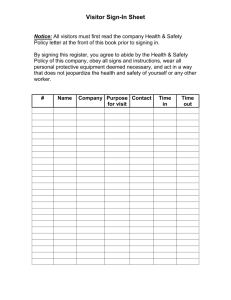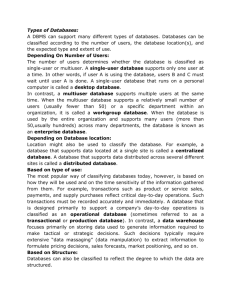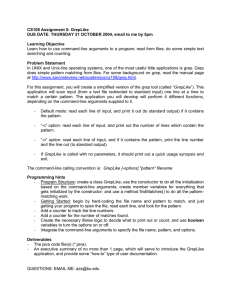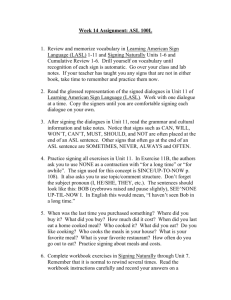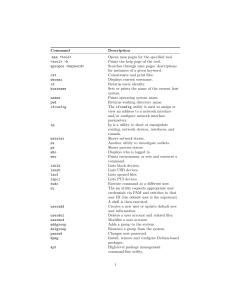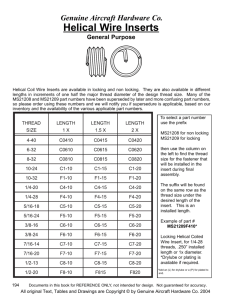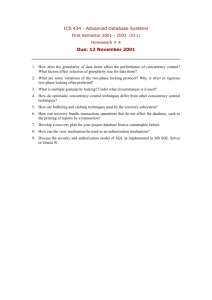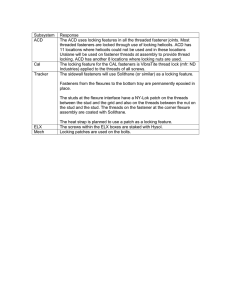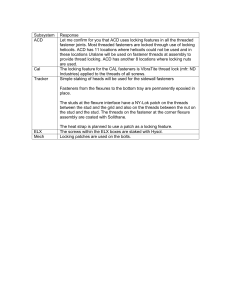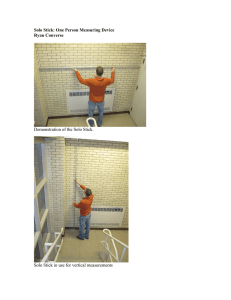Lesson 1 Questions
advertisement
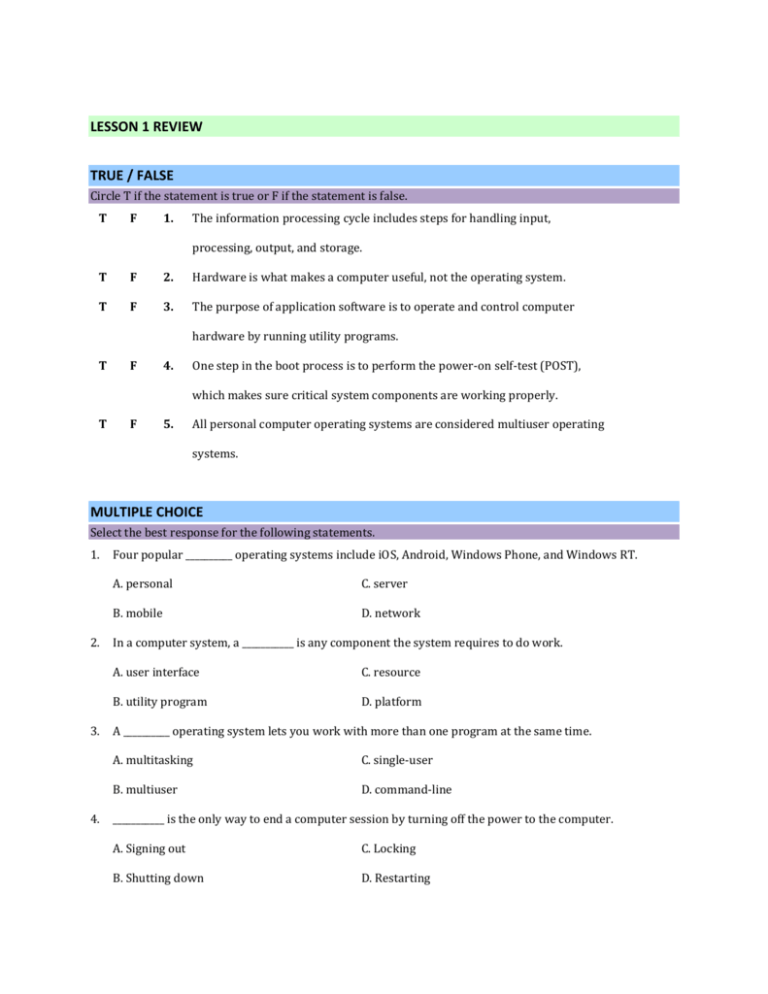
LESSON 1 REVIEW TRUE / FALSE Circle T if the statement is true or F if the statement is false. T F 1. The information processing cycle includes steps for handling input, processing, output, and storage. T F 2. Hardware is what makes a computer useful, not the operating system. T F 3. The purpose of application software is to operate and control computer hardware by running utility programs. T F 4. One step in the boot process is to perform the power-on self-test (POST), which makes sure critical system components are working properly. T F 5. All personal computer operating systems are considered multiuser operating systems. MULTIPLE CHOICE Select the best response for the following statements. 1. 2. 3. 4. Four popular __________ operating systems include iOS, Android, Windows Phone, and Windows RT. A. personal C. server B. mobile D. network In a computer system, a ___________ is any component the system requires to do work. A. user interface C. resource B. utility program D. platform A __________ operating system lets you work with more than one program at the same time. A. multitasking C. single-user B. multiuser D. command-line ___________ is the only way to end a computer session by turning off the power to the computer. A. Signing out C. Locking B. Shutting down D. Restarting 5. When data is processed into a meaningful form, it becomes ______. A. information C. storage B. input D. memory WRITTEN QUESTIONS Write a brief answer to the following questions. 1. How does a computer follow the information processing cycle to perform tasks? 2. What does it mean to be computer literate? 3. What is the purpose of an operating system? 4. What is the difference between system software and application software? 5. Why is managing memory one of an operating systems most important tasks? 6. How does an operating system’s Plug and Play feature work? 7. What is the difference between signing out and locking the computer? 8. What is the difference between a command-line interface and a graphical user interface? 9. What does it mean that Linux is open-source software? 10. What is an embedded operating system and where would you find one?
